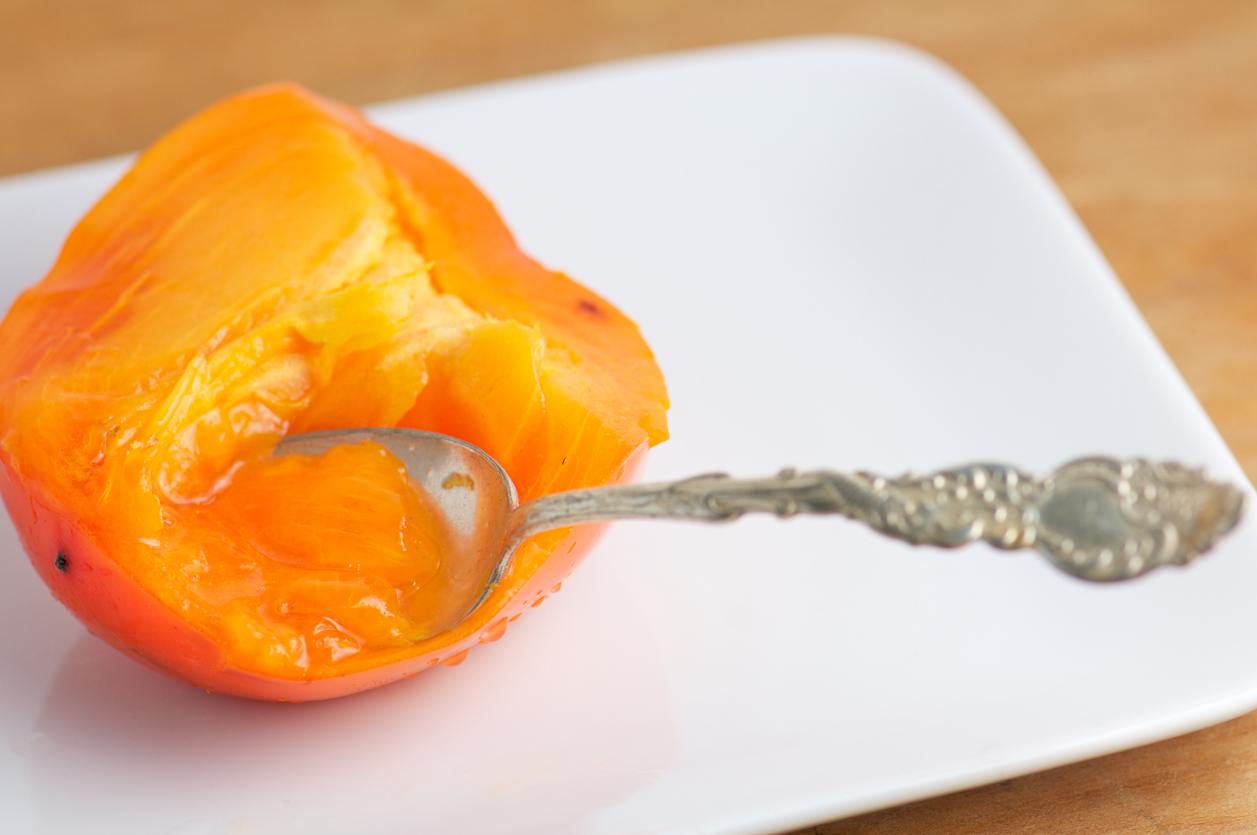One of the most loved autumn Japanese fruits, kaki (柿), or persimmons, (though somewhat different from what we tend to think of persimmons in the west), are officially in season. And these orange miracles deserve a special note because they are:
- Extremely rich in dietary fiber
- Rich in vitamin A, vitamin C (more than lemon) and many valuable B-complex vitamins such as folic acid, pyridoxine (vitamin B-6) and thiamin
-
freakindelicious
If you’re unaccustomed to these magical smooth-skinned orbs, here’s a lowdown.
The miracle orange fruit
I fell in love with kaki during my precious time in the Japanese countryside. Every October, these magical golden orbs came into my life, freshly picked from my colleague’s yard (with permission, I swear!) Although uniquely sweet, persimmons come in at least a thousand different varieties, we can broadly classify them into two major groups: the non-astringent kind and the astringent kind (astringent meaning the uninvitingly tangy taste that comes from accidentally chewing banana skin, for example).
The non-astringent kind, fuyuu-gaki, are round, fat and firm, and look like a mini pumpkin or an orange tomato. In Japan, fuyuu are typically eaten as a dessert, peeled with a knife, seeded, then cut into wedges similar as you would an apple. Because of their crispness, fuyuu go well with accompanying cured meats and cheese boards, tossed into fresh salads, added to savory stews, or my favorite: sliced thin and eaten with goat’s cheese and honey on toast.

The astringent, hachiya-gaki, are slightly elongated and acorn-shaped. Unlike fuyuu, because of their high astringency, hachiya must be completely ripened (soft and squishy) so that their astringency is naturally removed before they can be eaten. Because of their jam-like consistency, hachiya are perfect as a topping for yogurt, granola, and/or oatmeal, added into cakes and puddings or my favorite: scooped fresh with a spoon.
Click here to read more.
- External Link
- https://savvytokyo.com/
 Take our user survey and make your voice heard.
Take our user survey and make your voice heard.




9 Comments
Login to comment
1glenn
When I reflect upon how the choices available in the grocery section of the markets have increased over the years, it is nothing less than amazing.
Persimmons are just one of the delicious fruits that are now available. Fortunately, my neighbor has a tree, and keeps us supplied during season. They are not cheap in the markets.
When I was a kid, not only were persimmons a rarity, but even mushrooms were an unknown. When mushrooms first became widely available, I used to cook up a whole pan of them with butter and wine, and delight in the wonderful flavor.
My Vietnamese/American neighbor has turned his backyard into a cornucopia of delicious oriental fruits, which he is rightfully proud to share.
itsonlyrocknroll
I have trees in my fruit garden. Kochi.
Great breakfast staple with oats.
FizzBit
We’re too busy finishing up our remodeling to take care of ours properly but every time my neighbor stops by he pulls a few down and starts eating them without peeling. Can’t wait till next season when I can properly harvest them.
Zack
Kaki sold in regular shops is seedless and tasteless just like almost all fruits here. Unless you are willing to pay ridiculous price. I don't know how those who say fruits here taste good would say when they taste the organic not genetically modified/selected for best size and looks and not covered with pesticides and wax.
kurisupisu
Eating Kaki right now that I picked off a tree.
Absolutely delicious!
The hoshigaki is also a veritable taste of sweetness and fruitiness and should be more available this month.
Anyone wondering about a potential present for a Japanese friend over the usual cream cakes should look out for them .
wallace
We like persimmons. Local farmers give us some.
Mr Kipling
Kaki are exceedingly good fruits!
Charlie Sommers
I live in Tennessee where wild persimmons grow prolifically. Like hachiya-gaki they must be fully ripened before they are edible but it's worth the wait, they are small but very sweet. Sometimes opossums and raccoons beat me to the trees.
1glenn
I planted a plum tree in the backyard that, I hope, will help feed the animals when I no longer can. Most of the neighbors agree that it is a lot of fun to observed the wildlife in our neighborhood. Opossums, raccoons, skunks, squirrels, quail, hawks, osprey, Canadian geese,........the skunks seem to help keep the coyotes away. We use to have giant barn owls, but they have disappeared amongst all the development.